2010 Tata Aria
There’s a lot to like about the Tata Aria.
Published on Nov 10, 2010 08:00:00 AM
16,263 Views
Follow us on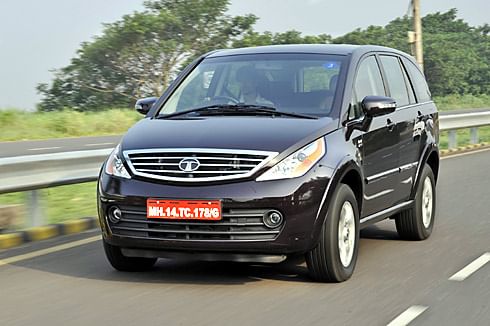
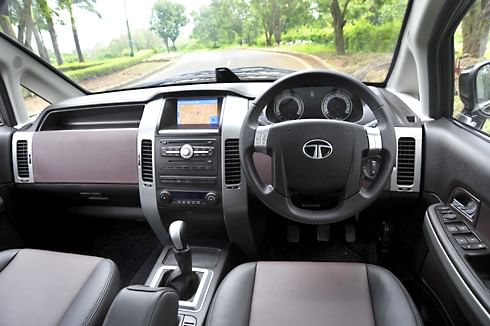
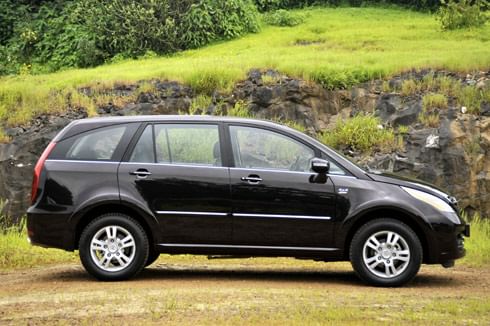
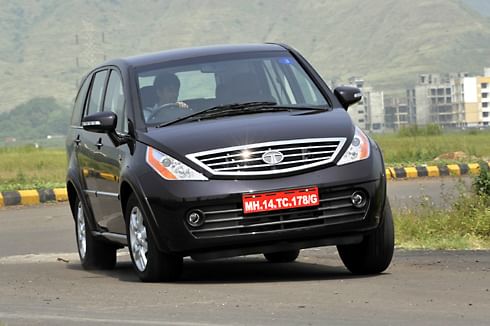
The Aria’s crossover design is an attempt to combine the attributes of a car, MPV and SUV into one package. The styling was done by I.DE.A of Italy with inputs from Tata Motors’ in-house design team, so have they succeeded? You can clearly see the design cues from the different segments like the cab-forward stance of an MPV, the large wheels and muscular arches of an SUV, and the front end which bears resemblance to a Tata car with its Indica-like grille and central bonnet crease. The vertical rear tail-light stack has traces of the Indica as well and the tailgate, which lifts vertically, adds to the car-like feel. This jumble of elements seems to come together as a whole and the Aria with its long wheelbase and large 235/65 R17 tyres has well-balanced proportions.
There are some interesting details too. The sharply cut headlights with twin barrels look superb but don’t offer as good illumination as the Safari’s lamps. Another clever touch is the way the mass of the car has been effectively camouflaged with the use of blacked-out rear pillars and a roof panel that swoops into the D-pillar. This coupé-like styling touch is also seen on cars like the Mercedes R-class.
The panel gaps in certain areas like where the A-pillar meets the bonnet are quite big. However, the deep-gloss paint job and splashes of chrome succeed in making the Aria look pretty premium from the outside at least.
Under the skin the Aria is completely new. The Aria’s X2 chassis is Tata’s first all-new ladder frame in 22 years and is as modern as they come. Sure, Tata could have taken the lighter, unibody or monocoque route but has stuck to a ladder frame as the company feels this tried-and-tested structure delivers the strength and rigidity demanded by our roads in the long run. Also, the Aria’s hydroformed chassis, the first for an Indian car, is lighter and stronger than a conventional frame.
The Aria is underpinned by an all-new front suspension not seen before on a Tata vehicle. The torsion bar layout, used in the Safari, has been ditched for a coil spring set-up with wishbones that leave space for front driveshafts. The rear suspension is ◊ ∆ similar to the Safari’s five-link design but rear discs brakes are standard. The Aria gets a new all-wheel-drive (AWD) system from DivgiWarner that acts ‘on demand’ like in most soft-roaders and automatically switches from two-wheel drive to four-wheel drive when it senses slippery conditions. However, in two-wheel drive, it is the rear wheels that are driven and not the front ones as is the case with soft-roaders like the Captiva, CR-V and Santa Fe. Traction and control and ESP are standard on the top-end Aria to add to the car’s surefootedness.
On roads where traction or the lack of it is not an issue, you can completely completely disconnect the front axle from the wheels with a simple press of a switch to reduce the load of the drivetrain. Tata has tried to make it lighter but at 2220kg the Aria is still heavy. All that equipment and the 4x4 hardware add to the scales
Copyright (c) Autocar India. All rights reserved.


















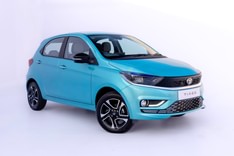
.jpg?w=234&h=156&q=90&c=1)

Comments
Member Login
Personal Details
No comments yet. Be the first to comment.